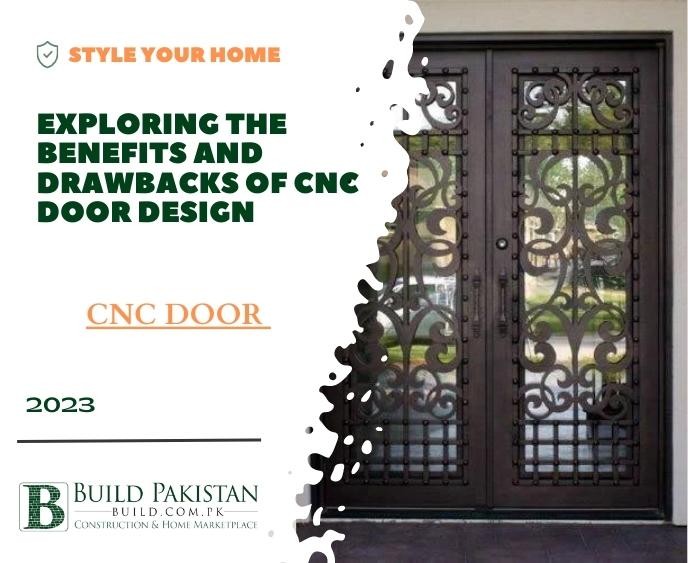Exploring the Benefits and Drawbacks of CNC Door Design

Introduction:
In the realm of modern architecture and
interior design, advancements in technology continue toreshape the way we
envision and create functional and visually captivating spaces. One such
technological marvel is CNC (Computer Numerical Control) door design. By
utilizing precision cutting and carving techniques, CNC door design has opened
up new possibilities for creating unique and intricate door designs. In this
blog, we will delve into the world of CNC door design, exploring its benefits, drawbacks,
market availability, and notable features.
Understanding CNC Door Design:
CNC door design involves the use of computercontrolled machines equipped with cutting tools to carve out intricate patterns, shapes, and textures on various types of doors. Unlike traditional methods that rely on manual craftsmanship, CNC technology allows for unparalleled precision and consistency in the design process. The computer-guided machines execute precise movements based on digital blueprints, resulting in highly detailed and visually stunning door designs.

Benefits of CNC Door Design
Design Versatility:
CNC technology enables limitless design
possibilities, allowing architects, designers, and homeowners to bring their
creative visions to life. Intricate patterns, geometric shapes, and
personalized motifs can be easily achieved, enhancing the overall aesthetics of
any space.
Precision and Consistency:
CNC machines operate with
remarkable accuracy, ensuring consistent results in each door produced. This
precision is especially valuable when replicating intricate designs or creating
matching sets of doors for larger projects.
Time and Cost Efficiency:
Compared to traditional manual
carving methods, CNC door design significantly reduces production time and
labor costs. The automation of the cutting process streamlines production,
enabling faster turnaround times and greater cost-effectiveness.
Drawbacks of CNC Door Design
Initial Investment:
Implementing CNC technology requires a
substantial initial investment in machinery, software, and training. This cost
can be a barrier for smaller businesses or individuals looking to incorporate
CNC door design into their projects.
Design Limitations:
While CNC machines offer great
flexibility, there may be limitations when it comes to certain design elements.
Extremely intricate or delicate details might not be achievable, and some
materials may not be suitable for CNC cutting.
Market Availability:
CNC door design has gained popularity in
both commercial and residential sectors. Many high-end architectural projects,
luxury residences, hotels, and corporate offices have embraced the unique
appeal of CNC doors. However, the market availaility of CNC doors may vary
depending on your location and the specific suppliers and manufacturers in your
area

Notable Features:
Material Options: CNC doors can be crafted from a wide range
of materials, including wood, metal, glass, and composite materials. This
versatility allows for a seamless integration of CNC door design in various
architectural styles.
Customization Options:
CNC technology empowers clients to
personalize their doors according to their preferences. From choosing specific
patterns, textures, and dimensions to incorporating branding elements or custom
artwork, CNC doors offer endless customzation possibilities.
Conclusion:
CNC door design has ushered in a new era of door
manufacturing, offering unprecedented design versatility and precision. While
there are initial investment costs and limitations to consider, the benefits of
CNC door design, such as design flexibility time efficiency, and consistency,
make it an attractive option for architects, designers, and homeowners alike.
As the technology continues to evolve and become more accessible, CNC doors are
poised to become a defining feature in contemporary architectural projects, adding
a touch of sophistication and uniqueness to any space.









